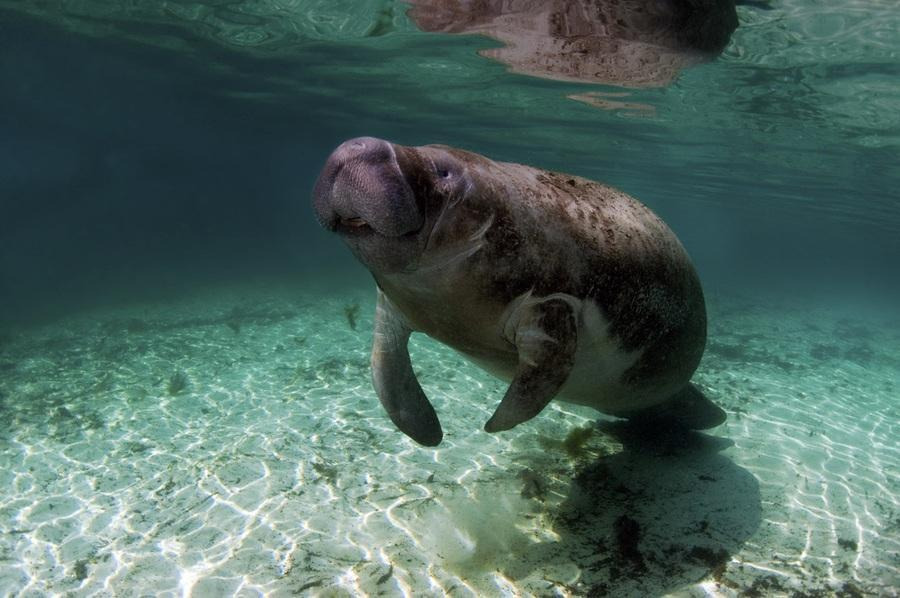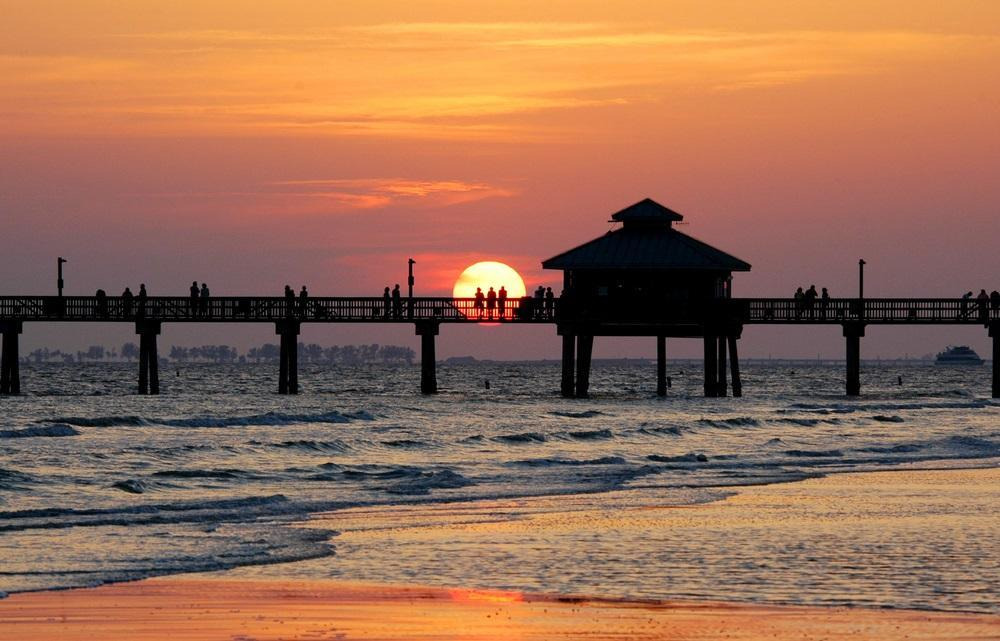Fort Myers Cultural Heritage Exploration Tour
Museum culture in Fort Myers, USA!
Manatee Park

Why Visit?
Discover the Wonders of Manatee Park: A Museum Tour Itinerary
Morning Arrival at Manatee Park
Start your day at the intriguing Manatee Park, a sanctuary primarily known for its seasonal manatee viewing. Located at 10901 Palm Beach Boulevard, Fort Myers, Florida, the park is easily accessible by car or local transport from downtown Fort Myers. If arriving by car, parking is available for a small fee which goes towards park maintenance and manatee conservation.
9:00 AM - Education Center and Museum
Begin at the park’s Education Center, which doubles as a small museum. Dive into the world of manatees with interactive exhibits and engaging displays that explore the biology and ecology of these gentle giants. Learn about the conservation efforts that are crucial for their survival. Tip: Don’t miss the short documentary that runs every 30 minutes!
10:30 AM - Guided Nature Walk
Join a guided nature walk led by a knowledgeable park ranger. This tour highlights the local flora and fauna, and how they support the manatee ecosystem. Keep your eyes peeled for wildlife sightings aside from manatees, such as birds and butterflies.
Noon - Picnic by the Pond
Take a break and enjoy a picnic by the pond. Bring your own lunch or grab a snack from the nearby vendors. This is a perfect time to reflect on the morning"s learnings and enjoy the serene views.
1:00 PM - Kayak Adventure
Rent a kayak to explore the waterways where manatees are often spotted, especially during the cooler months (December to March). Paddling through these calm waters provides a unique vantage point and closer encounters with the manatees.
3:00 PM - Wrap Up and Reflection
Conclude your tour by visiting the gift shop where you can pick up souvenirs that support manatee research and conservation. Take a moment at the viewing deck for one last gaze over the park, a perfect end to a fulfilling day.
Visitor Tips
- Best visiting months are between November and March.
- Wear comfortable walking shoes and bring sunscreen and a hat.
- Cameras are a must, but remember to be respectful and maintain a safe distance from wildlife.
Experience Manatee Park
Immerse yourself in nature and conservation at this unique sanctuary, where learning about manatees is as exciting as spotting them.
Museum Tips: Check for specific amenities and accessibility features relevant to museum travelers.
Fort Myers Beach

Why Visit?
Fort Myers Beach Museum Tour Itinerary
Welcome to Fort Myers Beach, Florida, a treasure trove of history, culture, and sun-soaked adventures! Whether you"re a history buff or a curious traveler, Fort Myers Beach offers a unique blend of museums that capture the rich tapestry of the area. Here’s how to make the most of your museum-hopping day in this picturesque coastal town.
Morning: Mound House
Start your day at the Mound House, a historical museum located on a 2,000-year-old Calusa Indian Shell Mound. It"s about a 15-minute drive from the center of Fort Myers Beach or a short ride on the LeeTran bus service. As the oldest standing structure on Estero Island, the Mound House offers a peek into Florida"s ancient and more recent past. Explore archaeological digs and immerse yourself in the fascinating story of the Calusa Indians through interactive exhibits.
Lunch: Local Dining
Grab lunch at one of the nearby local eateries. Fresh seafood is a must-try here, offering a taste of the Gulf Coast’s culinary delights.
Afternoon: Ostego Bay Marine Science Center
Just a short drive or a pleasant walk from the Mound House, spend your afternoon at the Ostego Bay Marine Science Center. This center features fascinating exhibits on the local marine life and ecosystems of the surrounding waters. Dive into interactive displays, touch tanks, and learn about the conservation efforts preserving the beauty and biodiversity of Fort Myers Beach.
Evening: Fort Myers Beach Art Association
Conclude your tour with a visit to the Fort Myers Beach Art Association, easily accessible by car or bus. Here, local artists capture the essence of the island through vibrant paintings and sculptures. Stroll through the gallery, perhaps picking up a piece to remember your journey by.
Wrap-up
As the sun sets, reflect on a day well-spent exploring the cultural and historical intricacies of Fort Myers Beach. Whether it"s through the ancient history of the Calusa or the vibrant marine life of the Gulf, today"s experiences have offered a deeper understanding and appreciation of this enchanting locale.
Museum Tips: Check for specific amenities and accessibility features relevant to museum travelers.
Rookery Bay National Estuarine Research Reserve

Why Visit?
Discover the Wonders of Rookery Bay National Estuarine Research Reserve
Nestled on the pristine coast of southwest Florida, the Rookery Bay National Estuarine Research Reserve offers a blend of captivating natural beauty and insightful educational experiences. This remarkable reserve spans 110,000 acres and serves as a sanctuary for a plethora of wildlife and marine species, making it a perfect destination for nature lovers and eco-conscious travelers.
Getting There
Situated between Naples and Marco Island, the reserve is easily accessible by car. From downtown Naples, take US-41 South toward Marco Island, and turn right onto Collier Boulevard. Follow signs for the Environmental Learning Center, the heart of the reserve, located at 300 Tower Road.
Start Your Tour at the Environmental Learning Center
Begin your visit at the Environmental Learning Center, which opens from 9:00 AM to 4:00 PM, Monday through Saturday. Entrance fees are modestly priced at $8 for adults, $5 for children, and free for those under 6. Here, you’ll explore interactive exhibits that delve into the ecosystems of the estuary and the diverse wildlife it supports. Don"t miss the impressive 2,300-gallon aquarium and the art gallery featuring works inspired by the natural surroundings.
Guided Tours and Trails
Enhance your experience by joining a guided tour. The Reserve offers bird-watching walks, kayak trips, and boat tours, providing an intimate look at the complex mangrove forests and the estuary"s role in local ecology. Pre-booking is recommended, especially during peak visitor seasons.
Snail Trail and Observation Bridge
Conclude your visit with a peaceful walk on the Snail Trail, a half-mile loop that offers scenic vistas and chances to spot wildlife in their natural habitat. The trail leads to an observation bridge, a perfect spot for panoramic views of the reserve and memorable photo opportunities.
Interesting Fact
Did you know that Rookery Bay is one of the few remaining undisturbed mangrove estuaries in North America? This reserve plays a crucial role in the research and conservation of these vital habitats.
This itinerary promises a profound connection with nature and a deeper appreciation of the intricate ecosystems that thrive at Rookery Bay. Whether you’re a seasoned naturalist or a curious traveler, the reserve’s wonders await to amaze you.
Museum Tips: Check for specific amenities and accessibility features relevant to museum travelers.
Edison and Ford Winter Estates

Why Visit?
Discovering Edison and Ford Winter Estates: A Journey Through Innovation and Legacy
Nestled in the heart of Fort Myers, Florida, the Edison and Ford Winter Estates offer a fascinating glimpse into the lives of two of America"s most remarkable innovators, Thomas Edison and Henry Ford. Prepare for a day of exploration and inspiration at this 20-acre tropical retreat along the Caloosahatchee River.
Getting There
The Estates are easily accessible via major Florida highways. Located at 2350 McGregor Blvd., Fort Myers, FL, it"s a straightforward drive from nearby cities - just 17 miles from Southwest Florida International Airport. Parking is available onsite.
Start Your Tour
Begin your visit at the museum, housing hundreds of inventions, artifacts, and special exhibits on both Edison and Ford. Don"t miss the impressive collection of early Ford vehicles. The museum opens at 9:00 AM, allowing you to delve into the creative minds of these inventors with fresh energy.
Explore the Homes
Next, stroll to the adjacent winter homes of Edison and Ford. The beautifully preserved buildings, including Edison"s "Seminole Lodge" and Ford"s "The Mangoes," offer a personal glimpse into their lives. As you wander through these historic homes, imagine the discussions and ideas that sparked here, forever changing the world.
The Botanic Research Laboratory and Gardens
Continue to Edison"s Botanic Research Laboratory, where he once experimented with rubber plants, aiming to secure a domestic source of rubber. Afterward, unwind in the lush botanical gardens, home to more than a thousand varieties of plants from around the globe, including the massive banyan tree planted under Edison’s supervision.
Practical Tips
- Wear comfortable walking shoes.
- Guided tours are available and recommended to enrich your experience.
- Allow at least 2-3 hours to fully enjoy all aspects of the Estates.
End your day inspired by the genius of Edison and Ford, carrying with you a deeper appreciation of how innovation shapes our world.
Museum Tips: Check for specific amenities and accessibility features relevant to museum travelers.
J.N. Ding Darling National Wildlife Refuge

Why Visit?
Embark on an unforgettable journey into the wild heart of Sanibel Island with a visit to the J.N. "Ding" Darling National Wildlife Refuge. This sanctuary, named after the pioneering conservationist and Pulitzer Prize-winning cartoonist Jay Norwood "Ding" Darling, offers a rich tableau of flora and fauna, providing an ideal day out for nature lovers and eco-tourists alike.
### Arrival and Orientation
Begin your adventure at the Refuge"s Visitor & Education Center, which opens at 9 AM daily except Fridays. It is easily accessible by car, located just a few miles from the Sanibel Causeway. Here, you can immerse yourself in interactive exhibits detailing Darling"s conservation efforts and the ecological importance of the Refuge. Don"t miss the short film about the Refuge"s history and wildlife — it"s a great primer before you explore.
### Explore the Wildlife Drive
Next, head to the Wildlife Drive, a 4-mile loop that you can traverse by car, bike, or on foot. As you embark on this scenic route, keep your eyes peeled for the myriad of bird species, from majestic ospreys to delicate egrets. The drive is open every day except Friday, allowing uninterrupted views of the tidal flats and mangrove forests, so integral to the local ecosystem.
### Guided Tours and Trails
Enhance your experience by joining a guided tour. The Refuge offers tram tours, providing insightful commentary on the local habitats and wildlife behavior. For a more personal exploration, trek along the Indigo Trail or the newly added Wildlife Education Boardwalk. Here, you can observe alligators basking and listen to the symphony of bird calls.
### Closing Your Day
Wrap up your visit by stopping at the Refuge"s gift shop, where you can pick up educational books and unique souvenirs. The Refuge closes at dusk, leaving you enriched with knowledge and a newfound appreciation for wildlife conservation.
This tour of the J.N. "Ding" Darling National Wildlife Refuge promises a day filled with natural beauty and educational riches, making it a must-visit for any museum culture enthusiast keen on environmental preservation.
Museum Tips: Check for specific amenities and accessibility features relevant to museum travelers.

